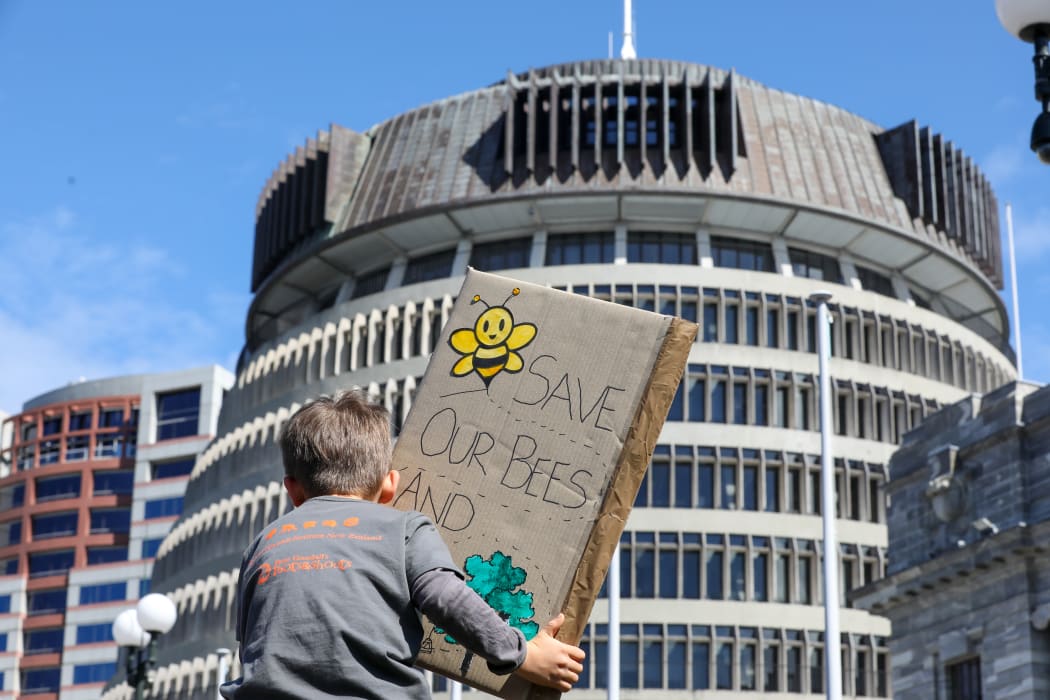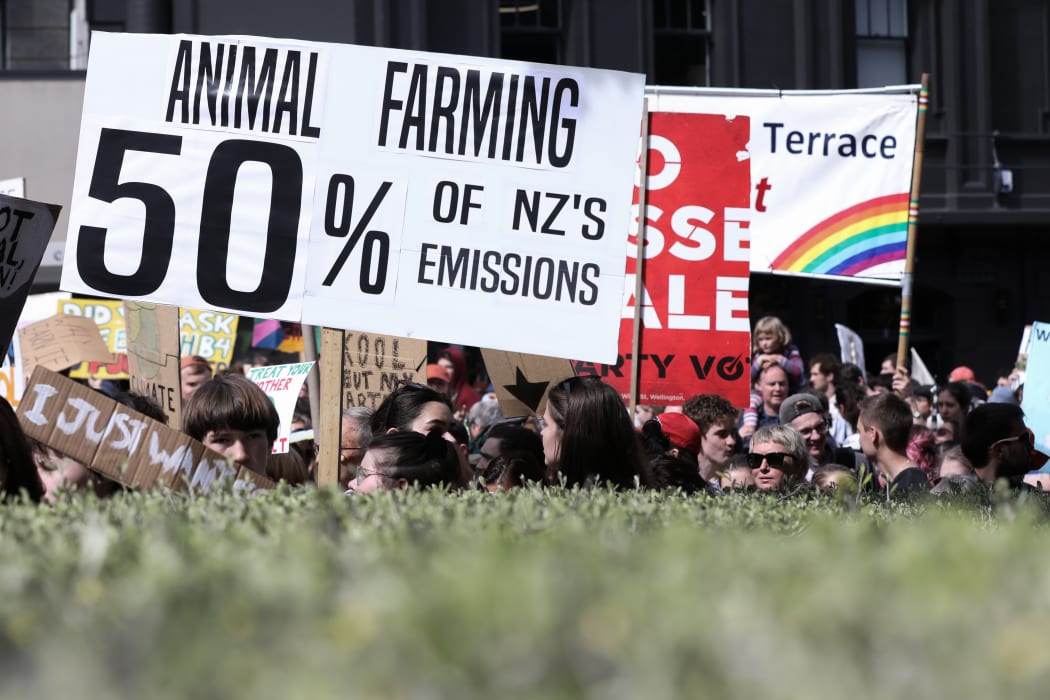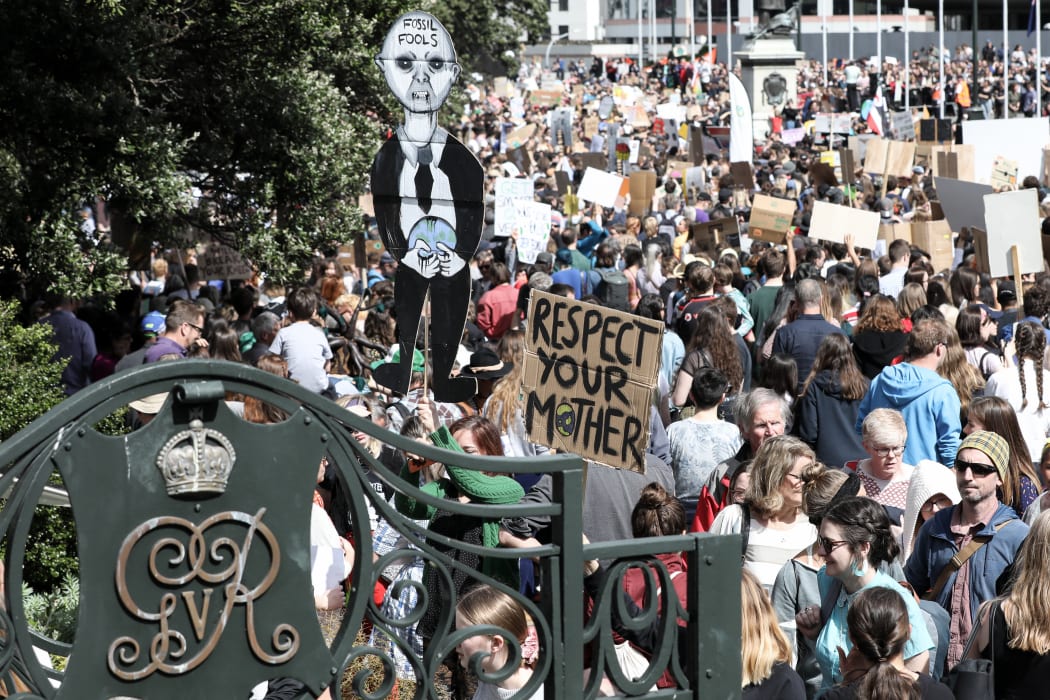There are two different climate change bills in Parliament this week. One bill is just starting off (it passed a first reading on Tuesday), the other is being polished off this week.
Two similarly named bills up at the same time is a recipe for confusion so here’s a brief outline of which is which, and what they do.

At a climate strike protest a small boy holds a banner towards the Beehive reading 'Save our bees and trees'. Photo: © VNP / Phil Smith
The Climate Change Response (Zero Carbon) Amendment Bill
The Climate Change Response (Zero Carbon) Amendment Bill is the one being finalised.
The bill is aimed at creating a framework that makes it easier for New Zealand to meet our commitments under the Paris Agreement (to limit the global average climate increase to 1.5 degrees Celsius above pre-industrial levels).
In particular it sets diminishing targets for biogenic methane emissions, it requires governments to set five yearly emissions budgets (which are picked up by the mechanisms created by the second bill), and it creates an independent commission to advise governments, on both mitigation and adaptation.
Mitigation is trying to prevent climate increases, largely via stopping adding more insulating gases to the atmosphere’s cuddly gas blanket.
Adaptation is planning for the outcomes of the temperature increases we’ve already baked in. Thermal lag means that the devastating outcomes of the gases already released will take decades to show.
The adaptation requirement acknowledges that a 1.5 degree increase is not a safe level of global temperature increase (even if we manage to stay within it), but will have pretty drastic impacts (sea level rise, weather pattern changes, storms, food production, disease vectors etc), that need planning for.
The bill was supported at second reading by all parties except for ACT, moved quickly through the Committee of the Whole House and is expected to pass the third reading comfortably on Thursday.

Banners arriving at a Climate Strike protest at Parliament. Photo: © VNP / Phil Smith
The Climate Change Response (Emissions Trading Reform) Amendment Bill
The second (and new) climate bill under discussion is the Climate Change Response (Emissions Trading Reform) Amendment Bill. It had its first reading on Tuesday.
The first reading debate is when MPs discuss the broad intent of a bill and whether it deserves their consideration at all. They decided it did. So the bill now goes to the Environment Select Committee for their inquiry (which lasts until the beginning of April 2020). They will request public submissions and are likely to be hearing evidence through the summer.
This bill is pretty technical and is focused on the ETS - New Zealand’s carbon emissions market. The minister in charge of the Bill, James Shaw explained the ETS in his first reading intro to the bill.
“[It] is our primary tool for reducing climate pollution in Aotearoa. It operates on a simple premise. Businesses that are responsible for the greenhouse gases that cause climate change face a price for those emissions and those that reduce emissions or plant trees to take carbon out of the atmosphere get a financial reward.”
This bill changes how the ETS works. It changes rules for forests, it includes animal farming for the first time, and it does something else a bit different that James Shaw described like this:
“The emissions trading scheme is known as a cap-and-trade system, but ours has been operating with no cap. For the first time since it was introduced in 2008, we will actually be able to cap emissions covered by the scheme. This limit is likely to reduce steadily over time in line with the emissions budgets set under the zero carbon bill. This will create a predictable sinking lid on climate pollution. Auctions will be introduced to allow the government to align the supply of units into the market within the cap.”
So, big changes then, but supported at the first reading by all parties except for ACT.
The public are invited to put forward their ideas on the bill to the Environment Committee.

Climate Strike protestors seen from the gates of Parliament Photo: © VNP / Phil Smith


